What is the difference between limestone and porcelain?
Limestone and porcelain tiles are popular materials that have been used across kitchens, ground floors, bathrooms and outdoors for many years. Both offer various benefits and qualities, as well as beauty and charm. Many customers ask what is the difference between limestone vs porcelain, so we felt a simple, but comprehensive guide, explaining some key differences would be helpful when it comes to choosing your tiles, from Dijon limestone to Dijon porcelain.
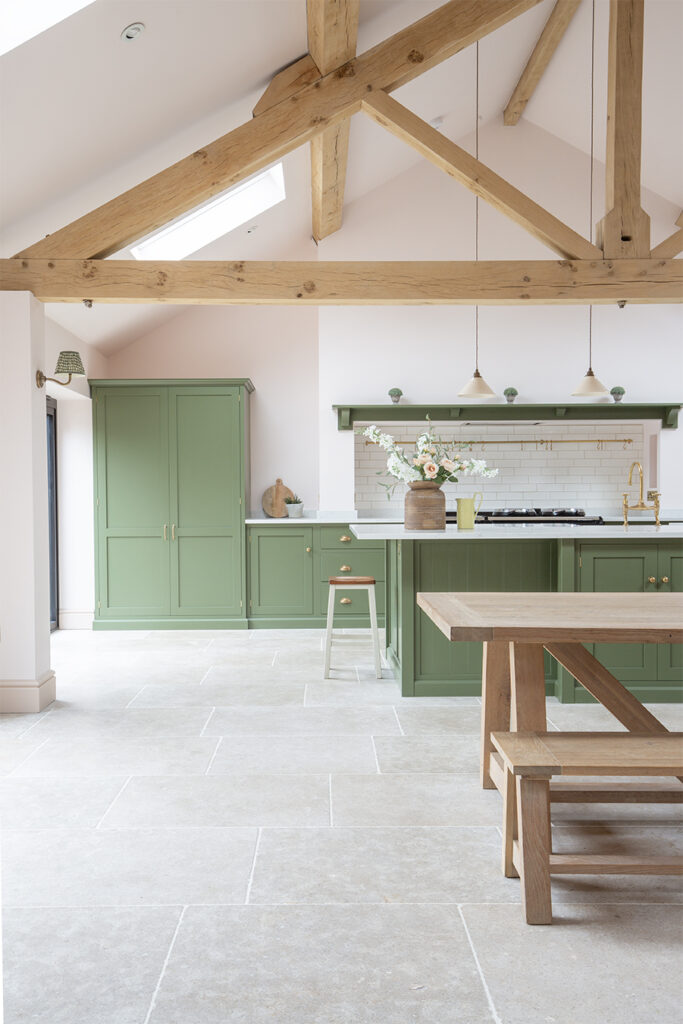
Material
Starting with the basics, limestone is a natural stone which, as the name would suggest, is a naturally occurring material that is quarried from the earth. Limestone is a sedimentary rock, that can be formed over millions of years, with the process creating a naturally dense material. Porcelain tiles are a man-made product that combines kaolin clay, finely ground sand and feldspar. The clay mixture is fired to an extremely high temperature, upwards of 1200 degrees Celsius, resulting in a very dense tile.
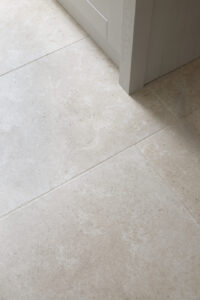
Aesthetics
Aesthetics is something that is very subjective and often in the eyes of the beholder. However, it is important to understand the differences between limestone and porcelain when it comes to the appearance of the floor tile to help you decide which might be right for you.
The beauty of Dijon limestone, is that no two tiles are ever the same, meaning a stone floor will be entirely unique. With this in mind, Dijon limestone has some degree of tonal variation, such as calcite veining, fossils, fissures, vents and crystallisation present. These features and characteristics within Dijon limestone are often what provides the charm of natural stone tiles and why many love the look of real stone. External Dijon limestone paving will also appear darker in tone when wet.
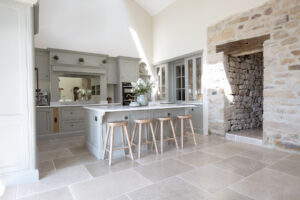
Dijon porcelain is a manufactured product made to mimic the look of limestone. Drawing on our unrivalled expertise, formed over decades of importing our bestselling Dijon limestone, we set out to create the best porcelain replica in the market. Our Dijon porcelain collection is available in three shades, Dijon Beige, Dijon Rendition by QS and Dijon Blanc by QS. The realistic minerals, fossils and calcite veining evident in this collection make it a wonderful alternative to our all-time favourite Dijon limestone, with the practicalities of porcelain. All stone effect porcelains have some level of pattern or print repeats – for our Dijon porcelain ranges this is around every 20 tiles. External Dijon porcelain paving tends to stay a similar colour when wet.
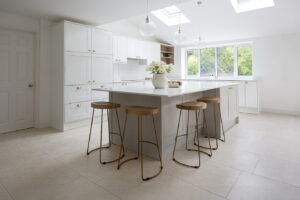
Tile Sizes & Formats
Dijon limestone is often in a ‘Free Length’ (FL) or ‘Random Length’ tile size. Free lengths have a fixed width (normally 400mm, 500mm or 600mm) and varying lengths ranging anywhere from 500mm up to a maximum of 1000mm. This is a very versatile flagstone format that is laid as a random brick bond for staggered joints and a natural feel. The Dijon limestone is also available in various other formats such as fixed rectangular tiles, square tiles and opus patterns, as well as smaller herringbone tiles and cobbles. The Dijon limestone can be produced as bespoke pieces, e.g. bullnosed steps, pool copings and skirting. We also offer the Dijon limestone in matching indoor and outdoor formats for a seamless flow from the house to garden.
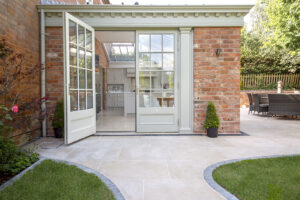
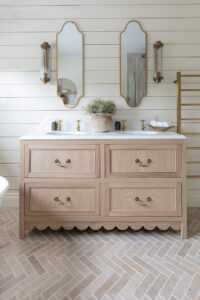
Porcelain can be diverse in size and format, however unlike natural stone, porcelain isn’t available in the FL format but only fixed sizing. The most common tile size for our Dijon porcelain flooring is a large format 900×600 tile. This can be laid as a staggered brick bond or a straight stacked bond, depending on the desired look. We also offer the Dijon porcelain collection in matching 20mm outdoor formats for a seamless flow from the house to garden.
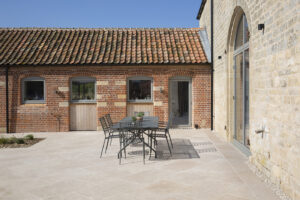
Installations & Maintenance
Knowing the difference between Dijon limestone and Dijon porcelain regarding installation and maintenance is good knowledge to have – ensuring you have a floor that will look its best for years to come. First and foremost, both limestone and porcelain tiles work very well with underfloor heating, following correct installation methods. Upon installation Dijon limestone requires sealing and will likely need resealing every 4-6 years. As limestone is porous, this sealant acts as a protective layer against water, oil and grease. Dijon porcelain does not need sealing and has a very low water absorption rate, with a porosity of under 0.5%. It is essential to use levelling wedges when installing large format porcelain tiles for best results as during the firing process, it is common for a slight bowing to occur.
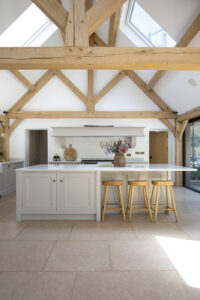
Both our Dijon limestone and Dijon porcelain are very forgiving and easy to maintain, however, it is worth noting that limestone requires a little extra care. It is important to only use stone friendly or pH neutral cleaners for limestone as anything acidic can damage the surface, we recommend Lithofin Wash & Clean. Limestone can be subject to staining, so it is worth spot cleaning as and when spillages occur. Porcelain is near enough stain resistant and the majority of cleaners are suitable to use, however we would still recommend a cleaner designed for porcelain such as Lithofin Conditioning Cleaner.
In terms of longevity, both materials offer a durable and practical surface. Limestone can be subject to surface scratches over time and exterior limestone paving can lighten in colour overtime – many customers find neither of these factors are of concern and actually add to the authentic feel of the tiles. If you are wanting something more consistent and unchanging through the years, then porcelain is scratch resistant and is also UV stable so it will not lighten when used outdoors.
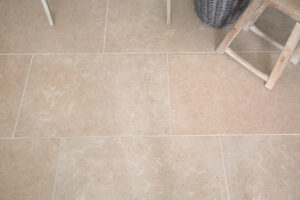
–
We hope this guide helps you in understanding the key characteristics between Dijon limestone and Dijon porcelain. As ever, we recommend a visit to one of our UK tile showrooms to see the beauty of limestone and porcelain in person. If you’re unable to visit a showroom, you can order free hand samples, all delivered to your door. Our friendly and knowledgeable team are also available over the phone, live chat and email for further advice or to answer any questions you might have.

